Hylo Impact review: sustainable speed
Hylo's Impact daily trainer aims to redefine performance footwear using an eco-friendly approach
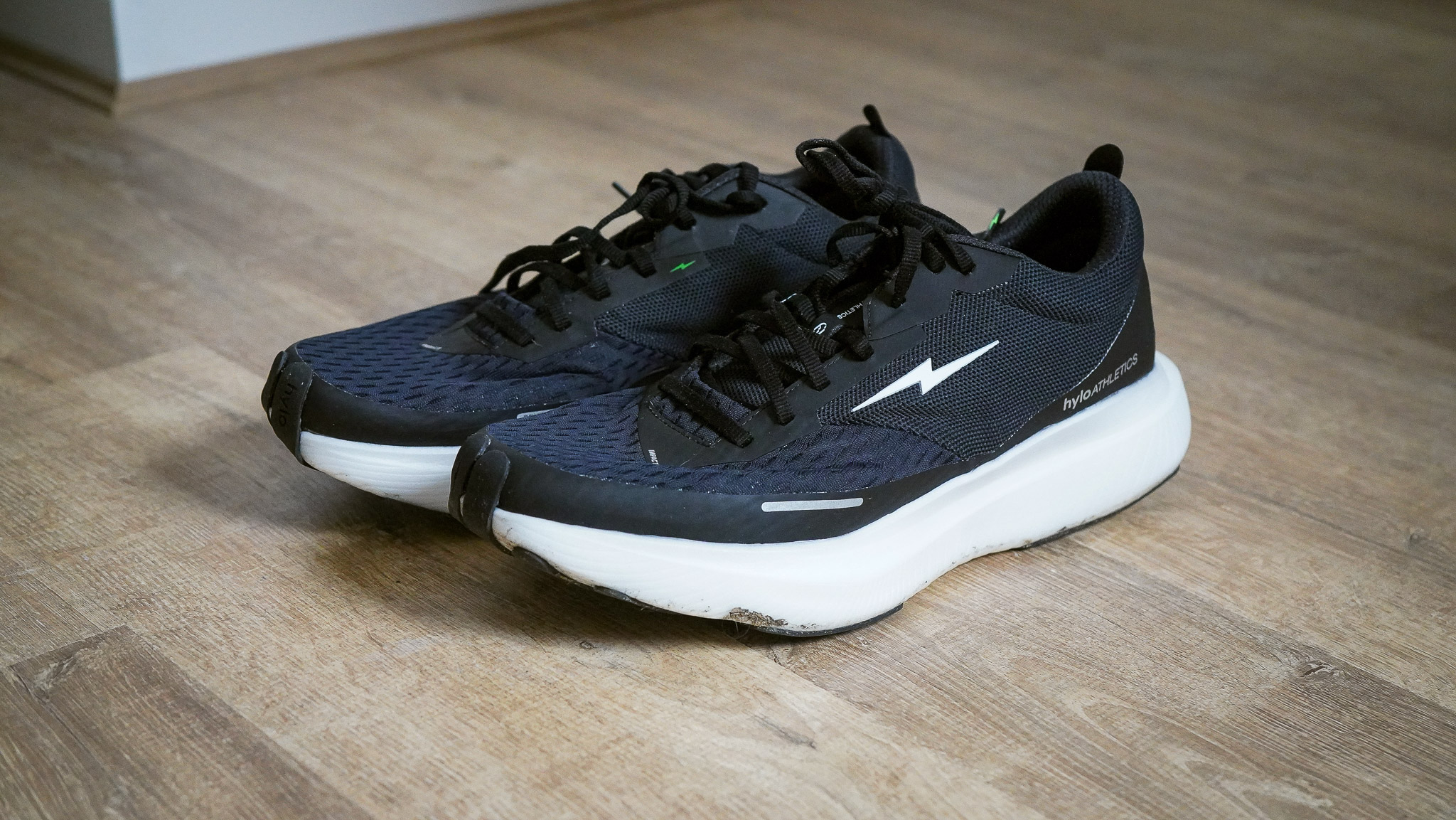
The Hylo Impact is a sustainable running shoe crafted with bio-based materials like nylon and corn-derived lining. With a bouncy midsole and Formula 1-inspired outsole, it offers excellent traction and performance for distances between 10-15k. Ideal for eco-conscious runners seeking sustainable yet high-performing footwear.
-
+
Sustainable materials
-
+
Lightweight and responsive
-
+
Excellent traction
-
+
Versatile performance
-
-
Lockdown could be a little firmer at the front of the shoes
-
-
Less propulsive than plated shoes
Why you can trust T3

One area of the running shoe industry that's seriously lagging behind the outdoor sector is sustainability. While we almost demand our waterproofs and hiking boots to be as environmentally friendly as possible, runners have yet to pressure big-ticket manufacturers to think more sustainably.
The biggest issue is, of course, marrying performance and sustainability. Runners want their shoes to be fast, light, and responsive, and if a pair ticks most of the boxes, they don't care if it's not sustainable. Terrible long-term thinking, I know, but it's the truth.
If only there were a company that could combine performance and sustainability! Allbirds took a couple of stabs at the concept but didn't really succeed. Now, it's disruptor brand Hylo Athletics' turn to take on the mantle and lead the way towards a future where performance running footwear is made sustainably.
The company's latest shoe, the Hylo Impact, is a daily trainer that places a significant emphasis on sustainable performance. I was lucky enough to get a pair a couple of weeks before the launch date, and even though I'm not quite ready to put a star rating on this review, I thought I'd share my initial thoughts about the shoe.
Are you ready to run like the depends on it? Let's go!
Hylo Impact review
Price and availability
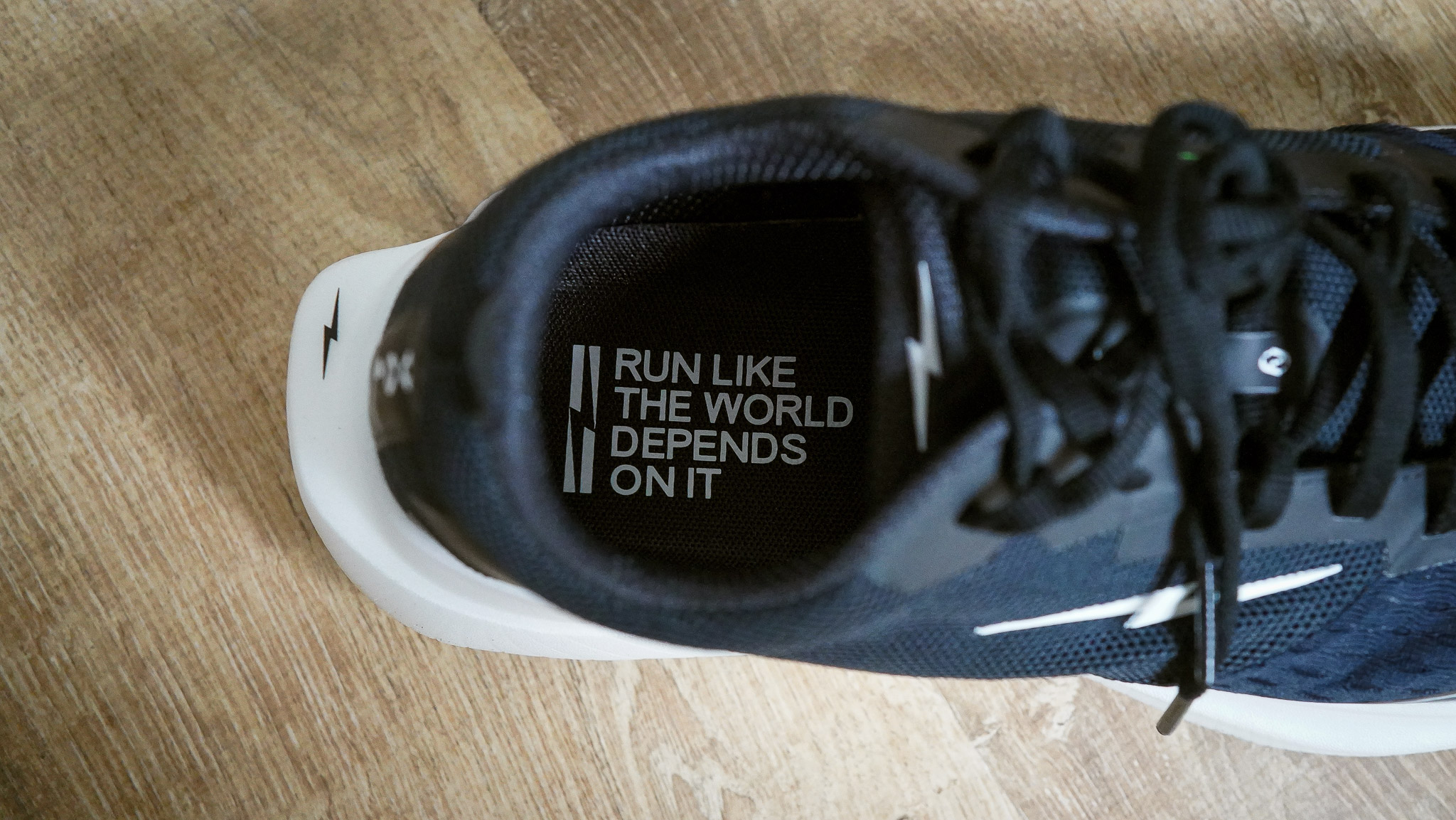
The Hylo Impact was announced on 25 February 2024 and will be available to buy via Hylo's retail partners (TBC) from 4 March 2024 and directly from Hylo Athletics from 10 March 2024 for the recommended retail price of £150/ $165.
The initial colourways include Undyed, Sand, TripleBlack, and BlackWhite, the latter of which I tested.
Specifications
- Best for: daily training, tempo runsCushioning
- Stack height: 33mm (heel), 25mm (forefoot)
- Drop: 8mm
- Weight: 319g/ 11.30oz (M10)
Design and build quality
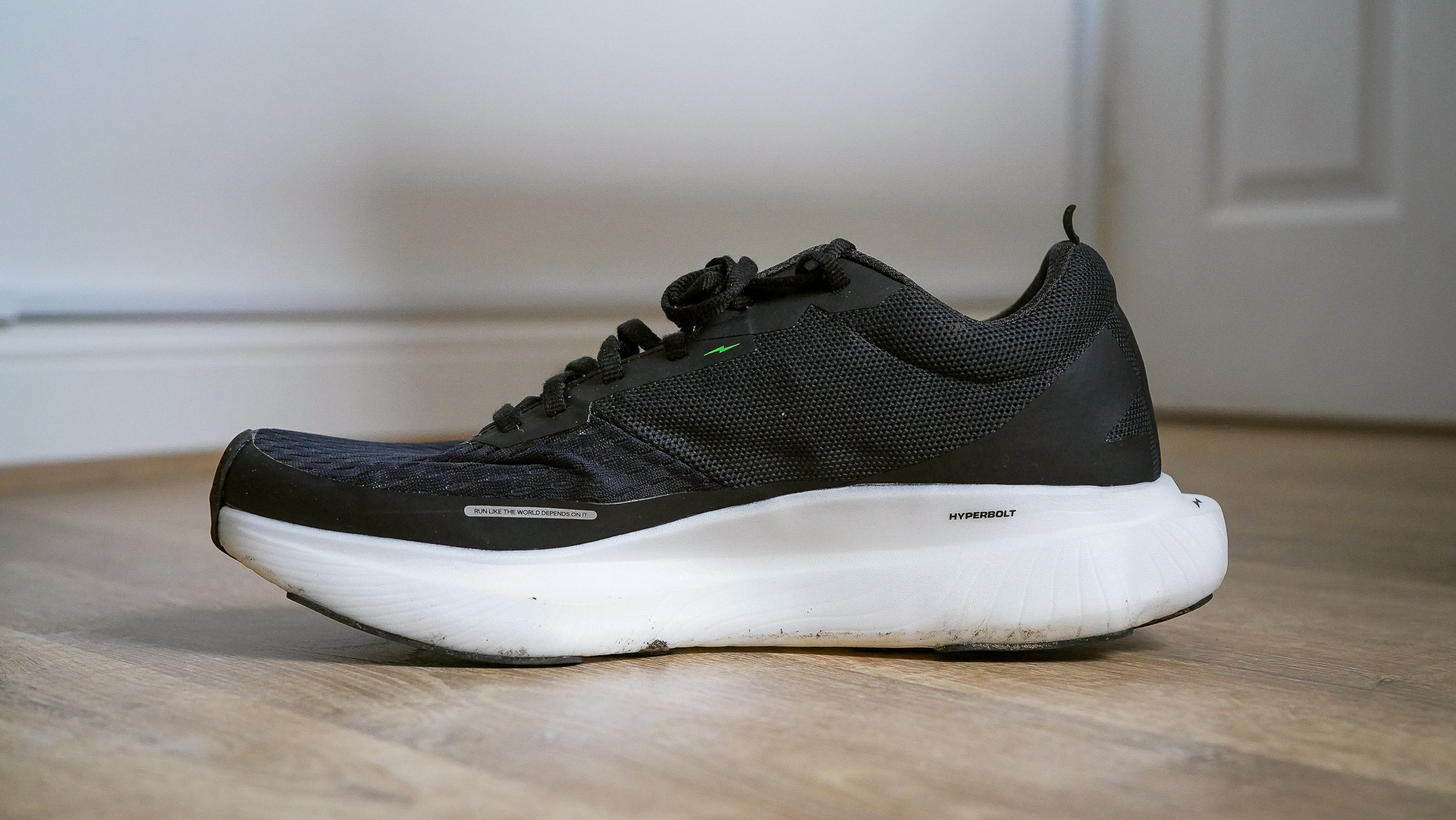
The Hylo Impact is all about sustainable materials.
The shoes feature a lightweight knitted upper made from 100% bio-based nylon derived from castor beans. It's coated with a durable water-repellent film and has a corn-derived lining, lace closure and gusseted tongue.
Said laces have a ribbed structure, are said to reduce slip, and are made from 100% bio-based Tencel Lyocell.
Underfoot, you'll find the 'supercritical' nitrogen-injected midsole foam with added bio EVA, delivering a 70% rebound, which Hylo Athletics claims is best in class.
The Hylo Impact has an 8 mm drop with a maximum stack height of 33mm. It's not a max cushioned shoe, but it bounces well, and the energy return feels excellent, too.
The section under the heels has this interesting tiered construction. Couldn't figure out whether it served a purpose or was an aesthetic choice. I assume it's the former.
The most peculiar bit is the outsole. Inspired by Formula 1 tyres, the 2.5mmt hick, longitudinal rubber strips are certainly eye-catching. I'm not sure if I love them or hate them, but they seem to perform well. The strips are made with 60% natural rubber.
Performance and ergonomics
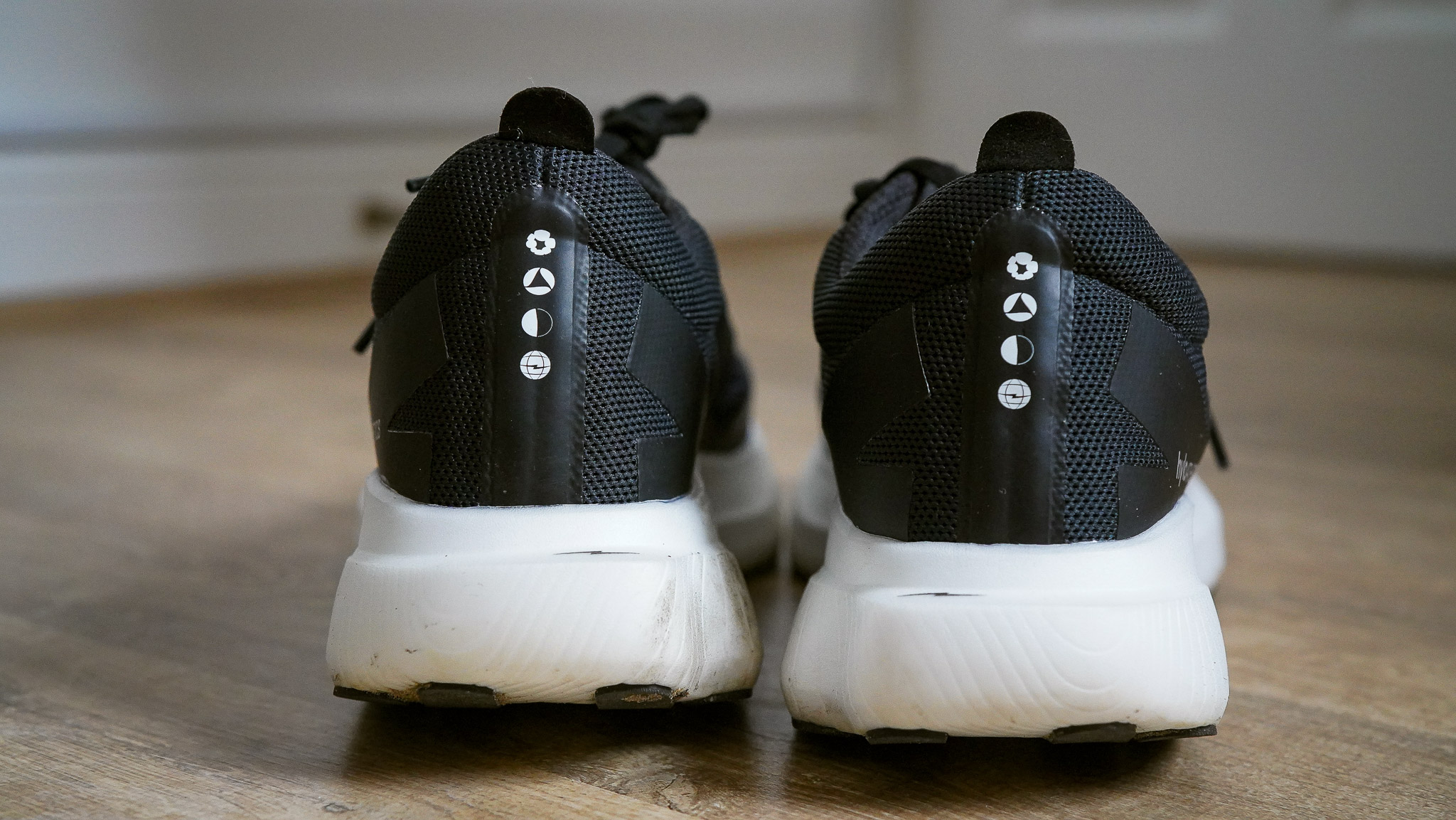
I took the Hylo Impact on both faster (e.g. sprint) and long runs (20k+) to see how it performs under different circumstances.
Hylo Athletics recommends the Impact for 'everyday road running', but since my first run in the shoes fell on a sprint day, I thought I might as well give them a try for something a bit faster.
I can't say I was surprised to see how well they performed in a fast session, but they were peppier than I expected, especially considering the Hylo Impact hasn't got a propulsion plate embedded in the midsole.
Traction was also superb. During one of the sprint blocks, I jumped off the pavement to avoid a collision with a pedestrian (imagine!), and when I was about to get back on the pavement, I stepped into mud.
Now, I was travelling at full speed and not in a straight line, so for a split second, my heart almost skipped a beat. When I felt my foot slip slightly, I envisioned a sprained ankle, missing a ton of training sessions, and generally feeling sad because I wouldn't be able to run.
Luckily, thanks to the Formula 1-inspired outsole, the Hylo Impact successfully displaced the soft, water-like substance, and I found my footing immediately after my shoes started sliding.
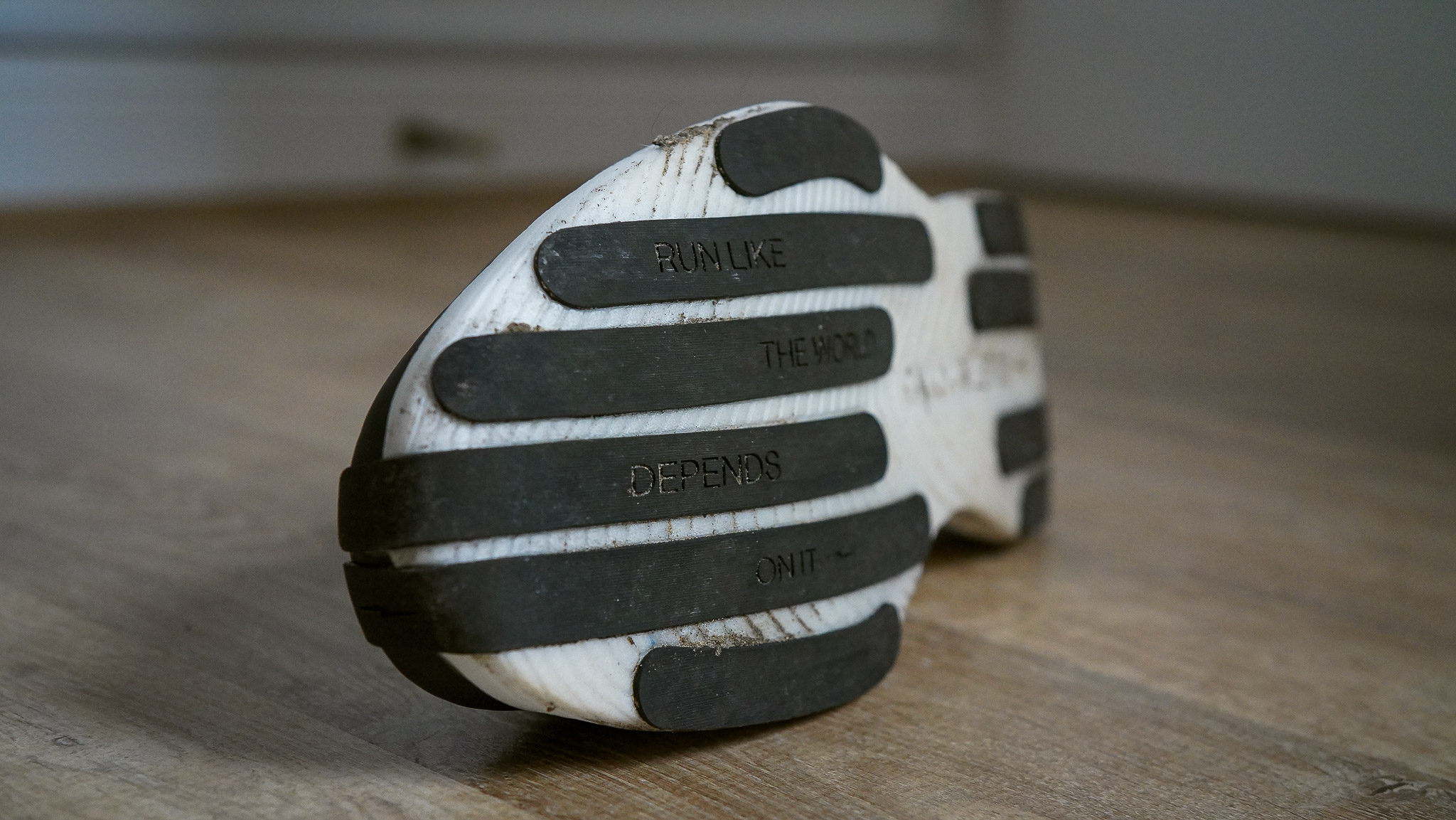
After a fab sprint session, I was excited to try the shoes on my long run a few days later. My only concern was the upper; I felt the knitted upper might be less breathable than synthetic uppers.
Thankfully, I had no overheating issues during my long run. The lockdown of the front of the upper could be better, but since the Hylo Impact isn't a racing shoe, I'm not complaining.
You could definitely feel the lack of propulsion plate over long distances, but it helps a lot that the midsole is so bouncy. The Impact rolls well, too, which enables you to keep going.
I reckon the Goldilocks zone for the Hylo Impact is somewhere between 10-15k. That said, I'm sure it would work well for shorter distances as a daily trainer.
Verdict
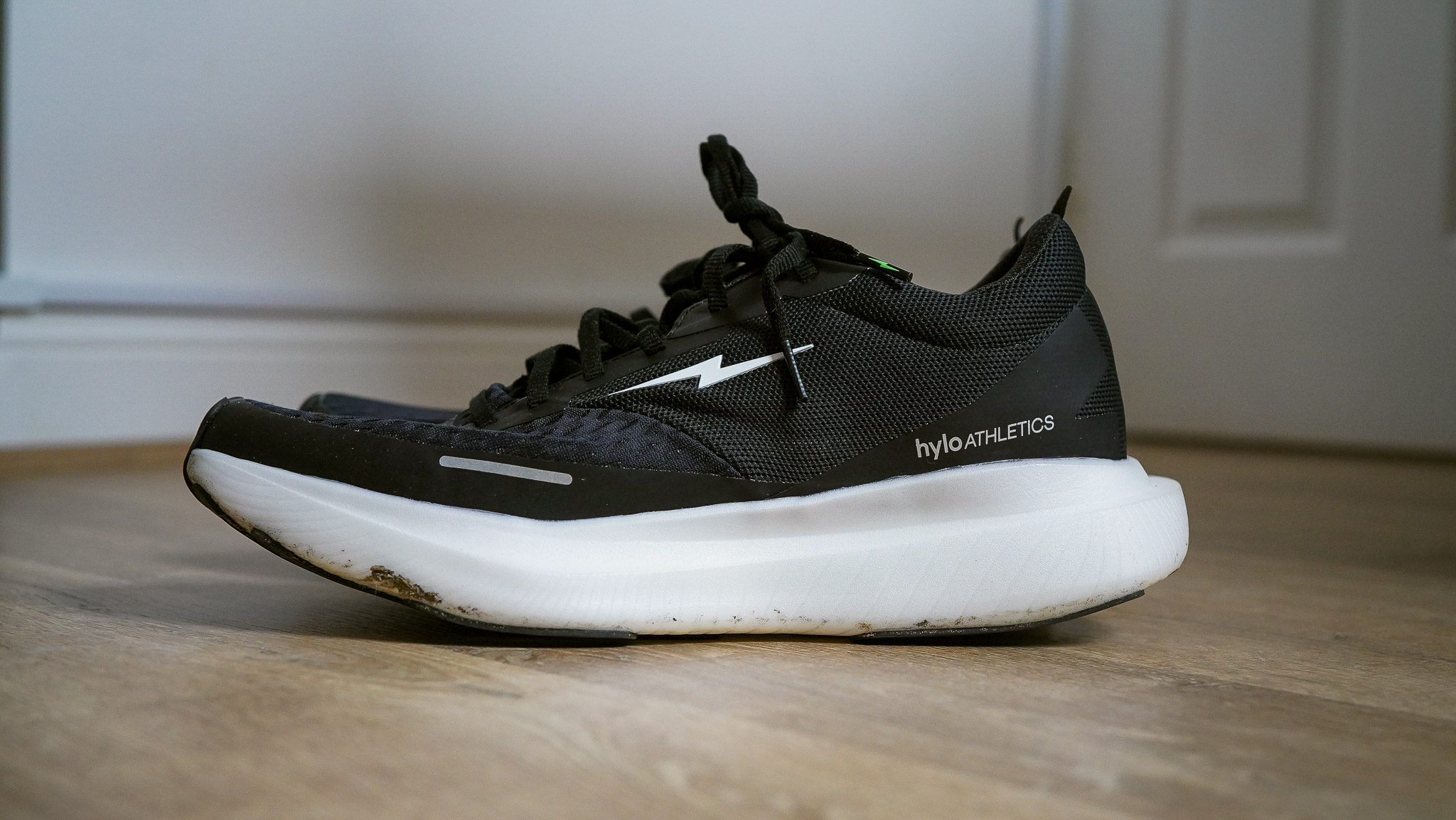
The Hylo Impact is a compelling choice for environmentally-conscious runners in search of sustainable yet performance-oriented footwear.
As an environmentally friendly daily trainer, it's hard to fault the Hylo Impact for its shortcomings. Yes, the lockdown could be slightly firmer – I appreciate this is a personal choice, anyway – and the shoes could be a little lighter, but they perform really well, and that's the main thing, right?
Most importantly, the Impact is a step in the right direction and, hopefully, will encourage other manufacturers to try to create running shoes that are more sustainable. Let's hope it happens sooner rather than later.
Also consider
Featuring a flexible knit upper with bio-based TPU overlays and ZQ-certified Merino wool lining, the Allbirds Tree Flyer 2 offers enhanced stability and durability. Despite some toe box pressure, it's a solid option for short-distance runs. Read my full Allbirds Tree Flyer 2 review.
While not revolutionary, the Nike Pegasus 40 remains a top choice for casual runners seeking comfort and versatility. Improved fit and airflow enhance comfort, maintaining the Pegasus franchise's reputation for reliable daily trainers at a reasonable price. Read my full Nike Pegasus 40 review.
Sign up to the T3 newsletter for smarter living straight to your inbox
Get all the latest news, reviews, deals and buying guides on gorgeous tech, home and active products from the T3 experts

Matt Kollat is a journalist and content creator who works for T3.com and its magazine counterpart as an Active Editor. His areas of expertise include wearables, drones, fitness equipment, nutrition and outdoor gear. He joined T3 in 2019. His byline appears in several publications, including Techradar and Fit&Well, and more. Matt also collaborated with other content creators (e.g. Garage Gym Reviews) and judged many awards, such as the European Specialist Sports Nutrition Alliance's ESSNawards. When he isn't working out, running or cycling, you'll find him roaming the countryside and trying out new podcasting and content creation equipment.
-
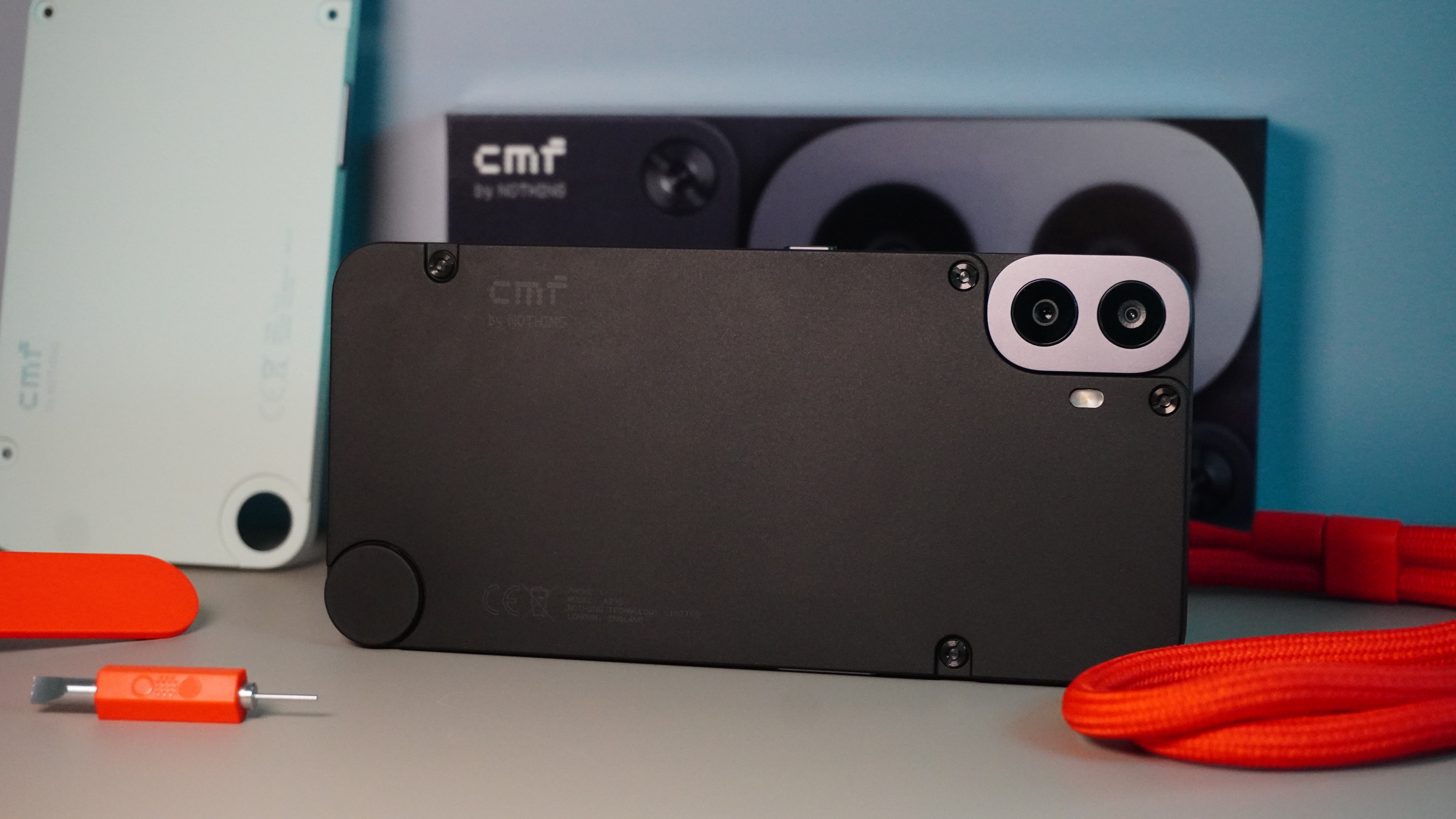 Nothing's next phone could be a budget powerhouse, thanks to this confirmed hardware detail
Nothing's next phone could be a budget powerhouse, thanks to this confirmed hardware detailOfficial details reveal more about the next phone coming from Nothing
By Chris Hall Published
-
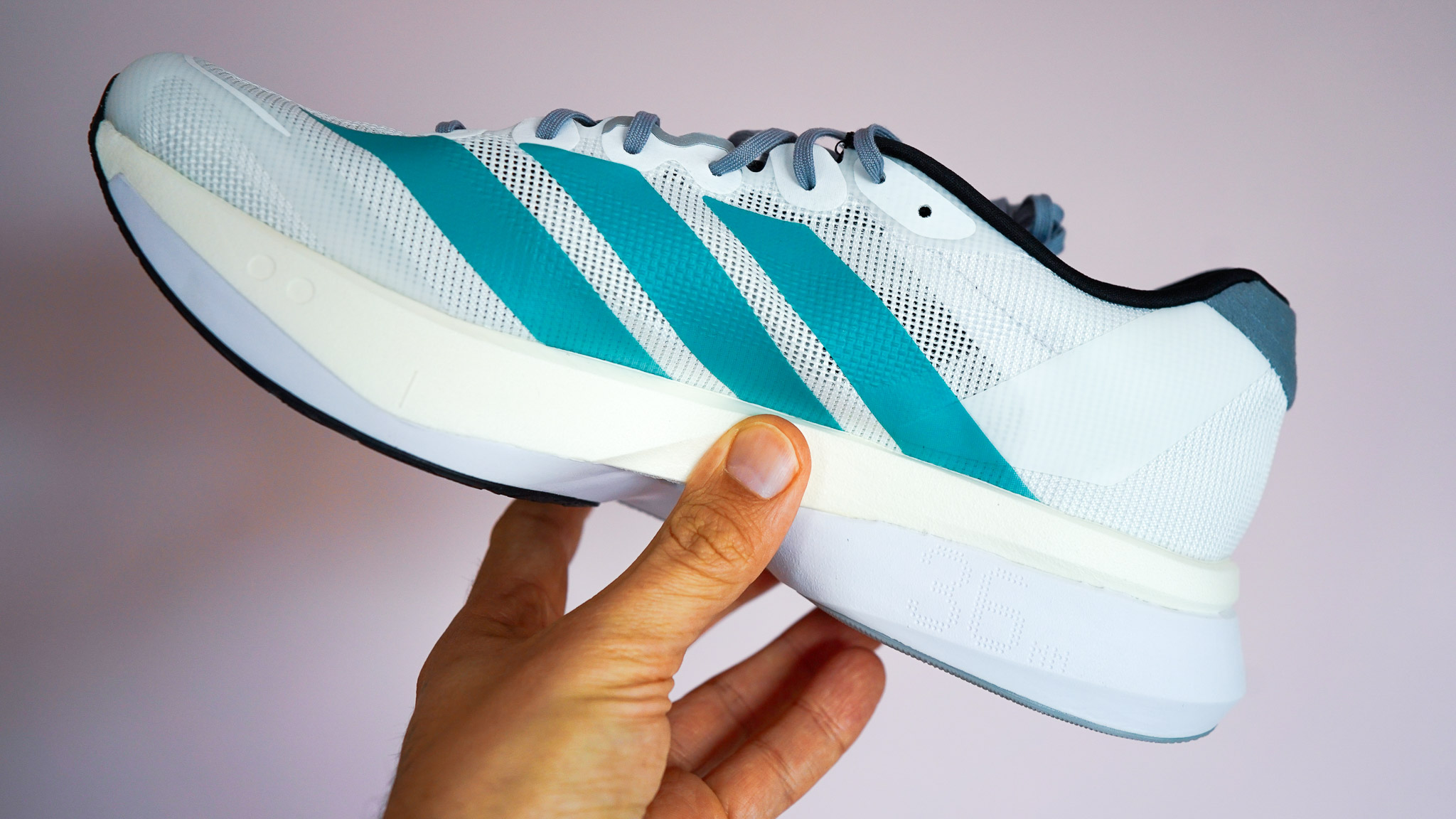 Adidas Adizero Boston 13 is softer, faster, and finally feels like a proper trainer
Adidas Adizero Boston 13 is softer, faster, and finally feels like a proper trainerThe brand quietly fixed everything runners didn’t love about the Boston 12
By Matt Kollat Published
-
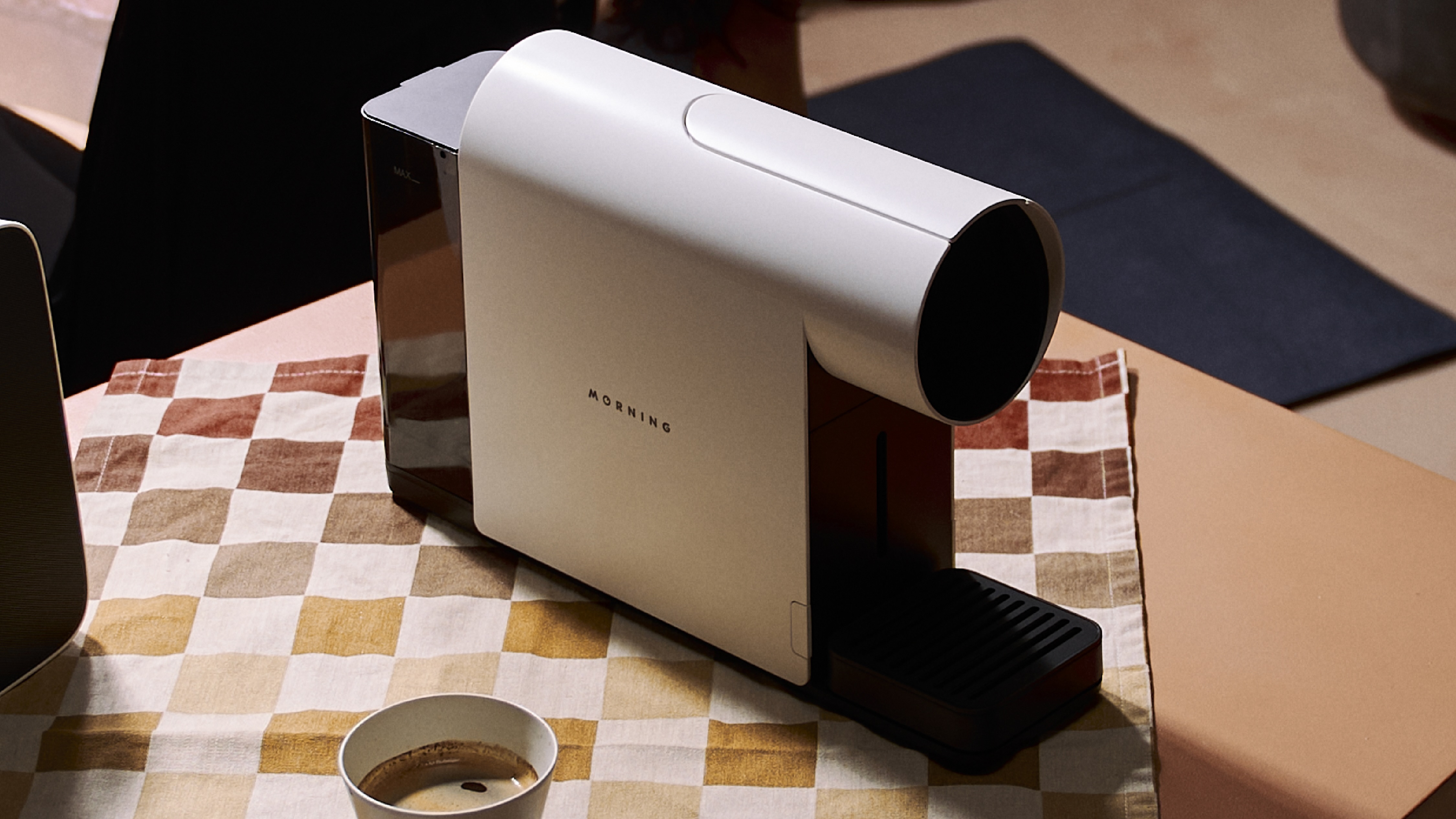 The Morning Machine’s younger sibling is here – same precision, now in a compact design
The Morning Machine’s younger sibling is here – same precision, now in a compact designIntroducing the Morning Mini
By Lizzie Wilmot Published